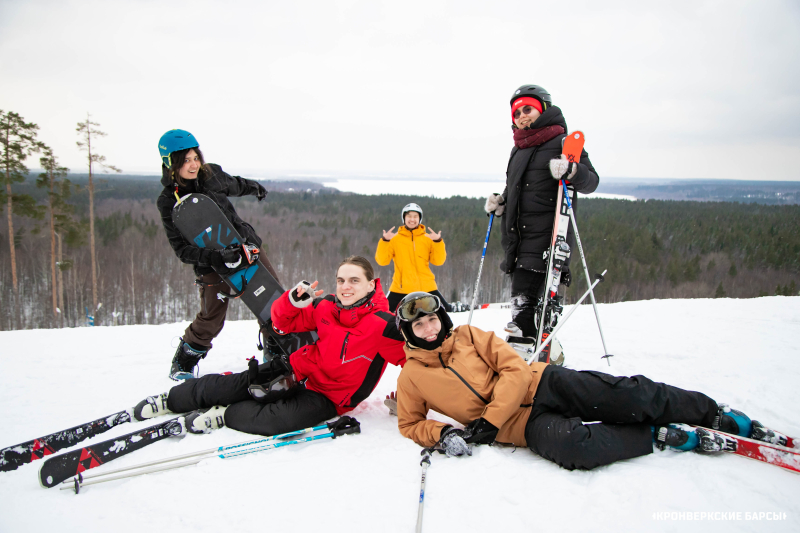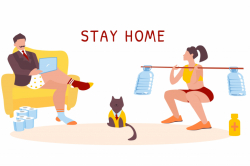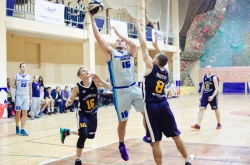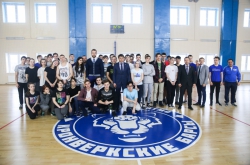Nordic walking
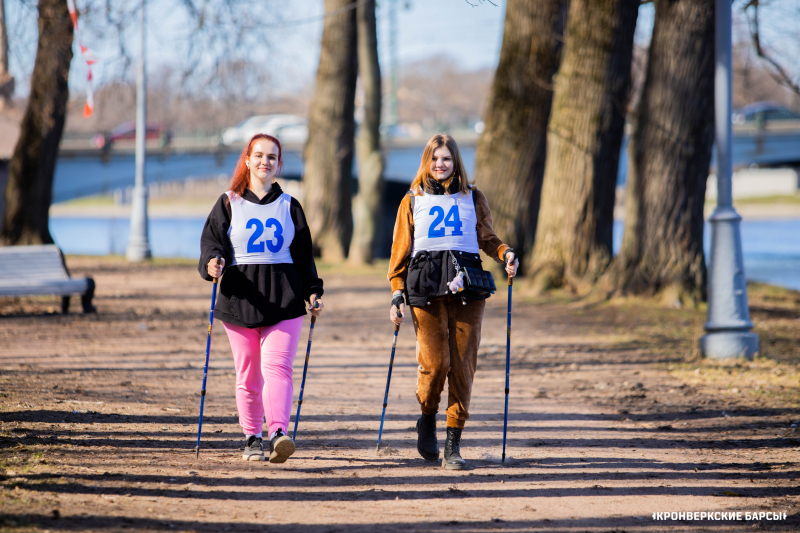
ITMO Nordic walking section. Photo courtesy of Margarita Serebrennikova
Margarita Serebrennikova, manager of the Nordic walking section at sports tourism club
Nordic walking is essentially walking with specially designed poles. The key differences from your casual stroll are your equipment, and for sure, speed. Typically, athletes can pick up speeds of up to four minutes per kilometer, which is three times faster than your usual pace!
This sport is suitable for anyone regardless of their fitness level. The benefits are the same as if you're jogging or doing any other aerobic exercise. It helps you get in shape, boosts your metabolism, and strengthens your cardiovascular system. And your mood gets better thanks to the endorphins and like-minded people by your side.
Clothes and equipment
There are a few minimal requirements to keep in mind. The poles should be individually adjusted so that your elbows are bent at a 90-degree angle when your hold the poles in front of your body.
It’s important to dress comfortably and appropriately for the weather. For example, during autumn, suitable attire may include sneakers, thermal underwear, a light jacket, sweatpants, a hat, a scarf, and gloves.
Locations
It’s always better to exercise in a park or a picturesque location, but a sidewalk would also do. Although, this way there will be more strain on your joints, your hands especially. Also, because you have to breathe deeply and actively, it is healthier if you inhale fresh air.
Alpine skiing
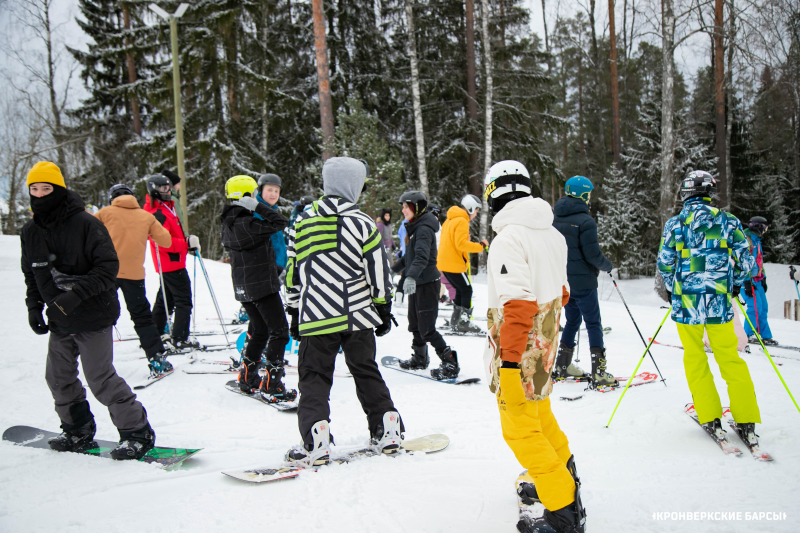
Photo by Maria Matusevich / ITMO Mediaportal
Timur Matveev, a manager at the alpine skiing club
Training in our club is divided into two parts: in winter, we practice on slopes on weekends, and the rest of the time we focus on acrobatics, including backflips, flips, and other tricks.
Our key skiing styles are slalom and the new school. The first one is classic skiing between poles or gates, and we train for inter-university competitions in that. New school is a stunt style that includes acrobatic elements on springboards and slope tricks on various ramps.
We have a core group that trains independently and in complex tricks but our club also welcomes beginners. In general, our club unites amateurs who are confident on skis or board. The sport will fit those who love parties and being a part of the community. Yes, it’s risky, but the stunt base helps a lot.
Equipment
First off, define your goal and budget. If you’re a beginner, start out with rented equipment and ask a friend or a coach to help you. For a more professional approach, you'll need slalom skis, bindings, a helmet, a warm jacket, slalom poles, and boots. Here's our detailed post about equipment you might need.
Locations
My top locations are Krasnoye Ozero, Snezhny ski resort, and Pulpark, which is a great spot for enthusiasts.
Orienteering
ITMO orienteering club. Photo courtesy of Sofia Syzonenko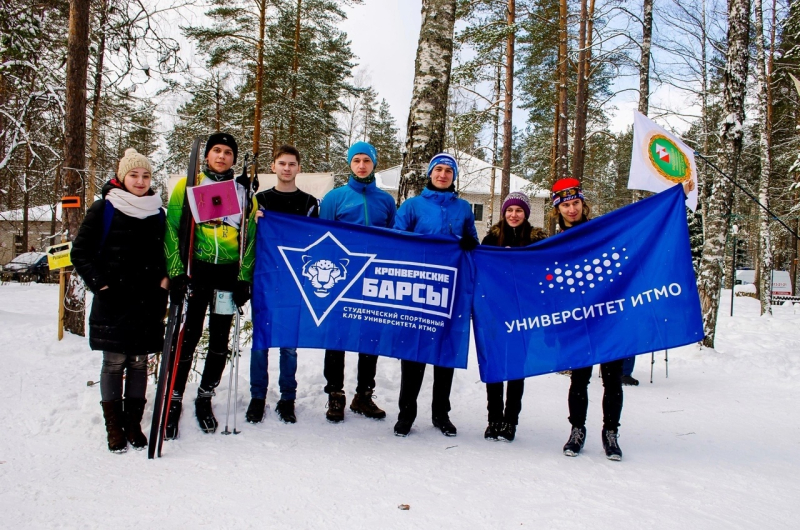
Sofia Syzonenko, a manager at the orienting club
Orienteering is a sport of not only physical but also tactical training. Here, you need to navigate a terrain and find all the control points marked on a map as fast as you can. Tactical training develops the ability to accurately interpret the map, determine your location on the terrain, make informed decisions about the best route to take, and run towards in azimuth.
Our club doesn't have training sessions, we mostly take part in competitions. It’s cross-country orienteering in summer and skiing orienteering in winter. It’s mostly suitable for advanced athletes who want additional points for an enhanced stipend or for those who have experience with orienteering but would like to go on as amateurs.
Clothes and equipment
The gear you need is a compass, sportswear, and shoes with metal spikes. They help you move through the forest and feel more stable on loose, wet, and rocky soil. Beginners can get by with regular sneakers, but you will feel more confident with spikes. In winter, instead of them, you need skis, ski poles, and a portable table for maps.
Locations
Orienteering requires rugged terrain, which can be situated far from urban areas. If you are interested in this sport, be prepared to dedicate Sundays to tours to the forest and engage in independent training during the week to stay in good physical shape.
Hockey
ITMO hockey club. Photo courtesy of Vladimir Chernykh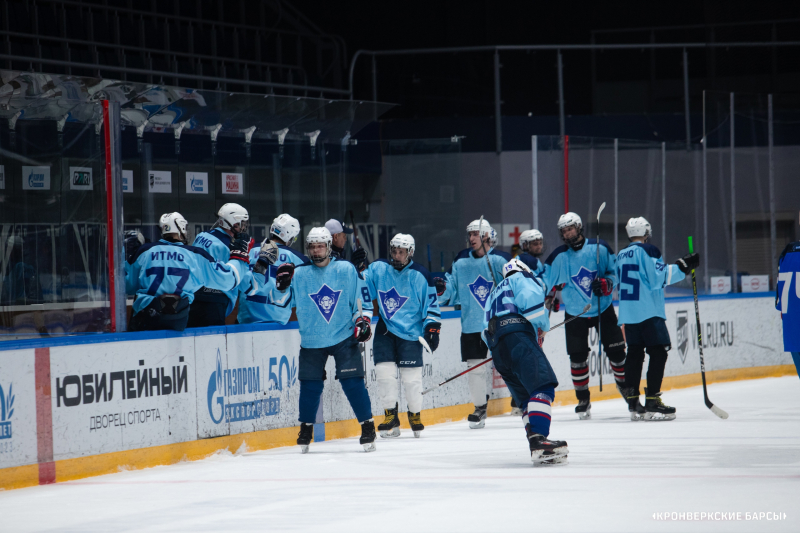
Vladimir Chernykh, the head of the hockey club
We train at an ice rink with a coach. Commonly, we do a warm-up followed by tactical drills like zone exits or power play simulations. The session usually ends with a game. Currently, we gather only once a week for an hour and fifteen minutes, but we hope to increase ice time during the off-season.
Our team consists mainly of ITMO students with prior experience in hockey and sufficient skill level. Another unique aspect is that we have players from other universities on our team. However, official tournament regulations limit the number of such players, making us the core of the team.
Every year, we participate in official tournaments organized by the Student Hockey League of St. Petersburg. This year, we decided to try something new and participate in an amateur 3-on-3 tournament, which has been a successful experiment thus far.
Clothes and equipment
One of the challenges with hockey is the uniform. Each field player must be fully equipped with skates, knee pads, special shorts, chest protection, elbow pads, a shell, leggings, a helmet, and at least one stick. For a goalkeeper, this list is even longer. Overall, it’s quite costly. This is another reason why students with a hockey background are accepted into the team because, in addition to experience, they also have a uniform.
Locations
In St. Petersburg, amateur hockey is relatively common with many teams and leagues available, including the NHL (Night Hockey League) and 3-on-3 league. There are quite a few ice rinks suitable for hockey scattered around the city that can be rented, and there are also smaller spaces available for those who’d like to practice various moves, throws for example. Hockey rinks are also a popular option in dormitory areas to gather and play with your friends for free.
